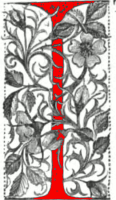
n the 18th century, Voltaire paid tribute to Scotland's cultural and scientific influence by writing, "We look to Scotland for all our ideas about civilisation." Within a few decades, this nation had established itself as a major center of European Enlightenment. Its influence in Britain and beyond the British Isles would last well into the following century and, indeed, into the 20th century. In the 19th century, for example, the publications of Walter Scott had a profound impact on British and, more generally, European literature, as they were at the origin of the historical novel. Scotland also made a name for itself by playing a major role in scientific innovation in the early days of the Industrial Revolution, in the fields of energy (James Watt), transport (Macadam, Thomson, and Dunlop) and communication (Bell). The Scots also made medical discoveries that were to have a major impact, such as the hypodermic syringe, invented by Alexander Wood in 1853, and the first use of chloroform as an anesthetic in childbirth by James Young Simpson in 1847. In the arts, the first gallery devoted exclusively to portraiture opened in Scotland in 1889. The group of artists known as The Four produced works that wielded a decisive influence on the emergence of Art Nouveau, an artistic movement that was to become one of the most important art movements of the 20th century.
This visibility, coming from Scotland's distinct contribution to the United Kingdom, is undoubtedly linked to the conditions that led to its union with England in 1707. Unlike Wales and Ireland, the country had been able to retain its own education system, its own legal system, and its own (Presbyterian) Church. Its active participation in the imperial enterprise (notably James Matheson and William Jardine), its exchange with the world, and its significant industrial production also earned one of its cities, Glasgow, the title of "second city of the Empire", while the Scottish capital claimed the title of Athens of the North as a counterpoint to London, which was considered the new Rome. For all these reasons, what was happening 'north of the border' could, on occasion, be taken as a model—or counter model—within the British or even Anglo-Saxon world. The English abolitionists (including Josephine Butler) were thus able to contrast the Glaswegian management of prostitution with the laws on venereal diseases adopted by the British government on a more continental regulatory model. The school model, and in particular the role played by parochial schools in Scotland, was also frequently cited as an example in the first half of the 19th century by advocates of a state supported education system in England and Wales, while the university model was being exported to some colonies, such as New South Wales.
The spread of a 'flexible' Scottish model as a national and international scale was often low-key, due to the 'plastic' nature of Scotland's cultural and political heritage, which was often adaptable to the culture of the recipient (cf. the borrowings from Walter Scott by James Fenimore Cooper for instance), and was never really a source of soft power. This is borne out by the "ricochet" influence of the so-called Scotch Baronial style, through the felicity of Balmoral Castle and estate, directly inspired by Scott's Abbotsford, which Miles Glendinning and Aonghus MacKechnie imply may have infused into the Second Castle Age. This is, more surreptitiously, the case in the discussion of Scott's estate (a generous host who welcomed writers, politicians, and readers of his fiction) that we find in the (often disapproving) writings of his many visitors, both contemporaries (notably Washington Irving) and non-contemporaries (Virginia Woolf).
Finally, in addition to the inspiration it may have generated, and the models it may have offered for some, beyond its borders, in the various fields mentioned, Scotland may also have represented a counter-model for others. In jest, we might think of the amusing expression 'No true Scotsman fallacy' in philosophy, and it is perhaps not entirely incidental that this formulation conjures up the figure of the 'true Scotsman' and the pitfalls of essentialism, given how much the definition of a supposed 'Scottish character' has puzzled people. Robert Knox's pseudo-scientific opposition between the Anglo-Saxon and Celtic races in his influential study The Races of Men (1850) was partly based on the perceived opposition between Highlanders and Lowlanders, which he transposed to a wider context. This distinction, based on an assumed Scottish model, enabled him to extrapolate the racial future of the imperial context, a discourse that echoed the vast racialist enterprise.
This international conference, to be held at Grenoble Alpes University on January 30 and 31, 2025, will thus focus on Scotland as a source of inspiration and example in the Victorian and Edwardian eras, but also as a counter model, both within and beyond the borders of the United Kingdom. The aim is to shed new light on this aspect of Scottish history that has yet to be studied.
Possible topics for proposals may include, but are not limited to:
- Scotland as a source of inspiration in the arts and literature;
- Scottish scientific, political, economic, and social models (or counter models) in Great Britain, Europe, British colonies, and the rest of the world;
- One or more Scottish models? Because Scotland is plural, the regional (Lowlands, Highlands, and Islands) and religious specificities will be examined.
Paper proposals (20 minute presentations), written in French or English (approximately 500 words) and accompanied by a short biographical note, should be sent no later than June 30, 2024, to conference organizers: marion.amblard@univ-grenoble-alpes.fr, cyril.besson@univ-grenoble-alpes.fr,and veronique.molinari@univ-grenoble-alpes.fr
A selection of contributions will be published in the online journal Cahiers victoriens et édouardiens.
Created 27 June 2024